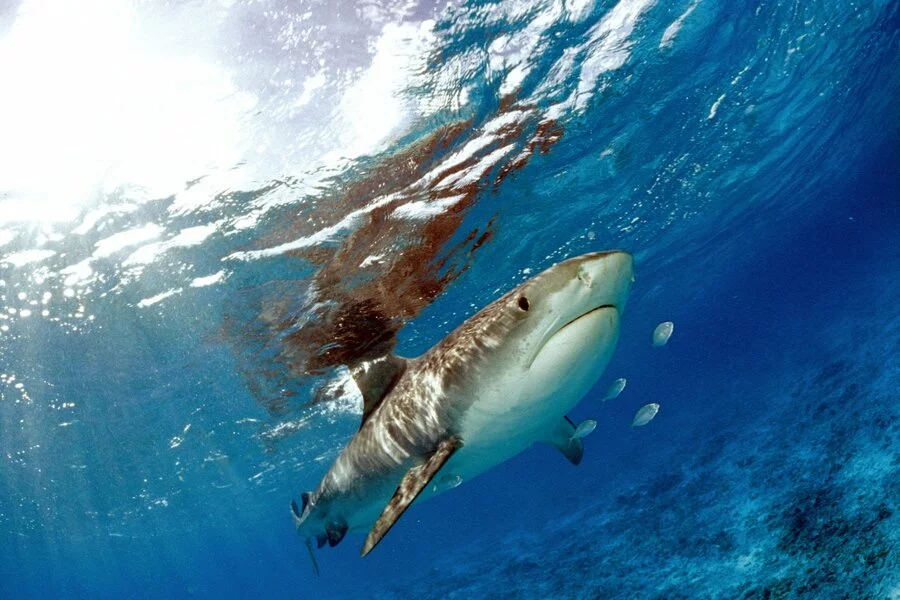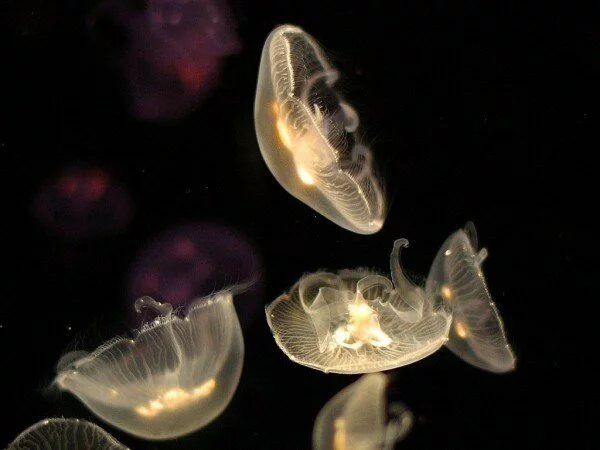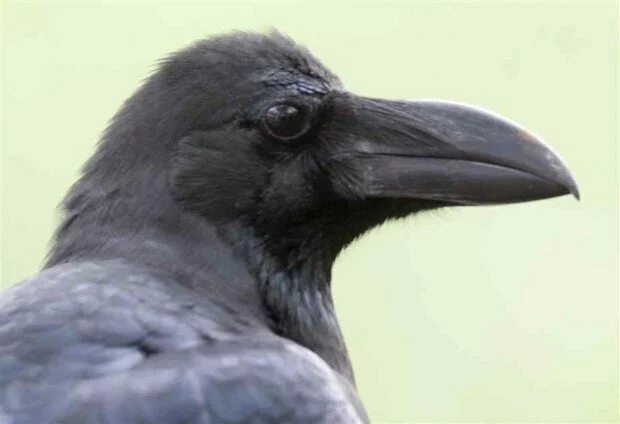Dangerous Neighbors: Hippopotami and Nile Crocodiles
The African waterways are by no means tranquil environments. Most animals which dare to approach the water’s edge put their lives at risk, as these waters are home to one of Africa’s most formidable predators, the deadly Nile crocodile (Crocodylus niloticus). With powerful jaws which can slam shut with incredible pressure and strong teeth designed to crush bone, these large predators rarely let go once they clamp their jaws around a target. They can be found feeding in large numbers, forming sizable groups dangerous to any creature foolish enough to wander too closely. Yet it is in this very same environment where the hippopotamus (Hippopotamus amphibius) must live and raise its young. Crocodiles are opportunistic predators, and a young hippo is an easy target for these stealthy hunters. However, despite its appearance, the hippo is also a powerful creature and a protective mother. Faced with a world of challenges and risks, the mother hippo must do everything within its power to ensure the safety of its vulnerable calf, and the young hippo itself must learn to grow up quickly in a habitat teeming with lurking predators.
Life for a young hippo can be tragically short, as the young animal can be driven by its curiosity to explore and venture too far from its mother. Unaware of the danger of its surroundings, the unprotected calf is susceptible to attack from one of the many crocodiles present in the same habitat. Nile crocodiles, growing to an average length of 16 feet and weighing around 500 lbs, are more than capable of attacking a killing a young hippo.[1] The large reptiles commonly approach their prey by submerging most of their bodies in water (with only their eyes and nostrils remaining above the water’s surface) and stealthily making their way to their target.[2] Once close enough, the crocodiles launch themselves out of the water, gripping their targets with their powerful jaws, and then pull their prey into the water to be overpowered and drowned. The large reptiles are capable of delivering crushing bites consisting of more than 3000 lbs of force per square inch, by far the most powerful bites in the animal kingdom.[3] This allows them to shatter bones and crush the shells of animals such as turtles. The combination of stealth and brute force allows the crocodile to prey on a wide variety of creatures, including zebras, warthogs, wildebeest, antelope, and even humans.[4] Indeed, many young hippos meet the same fate as the other animals making up the crocodile’s long list of prey animals.
However, the hippo calf possesses an excellent mother that will risk its own life to protect its young. Despite its appearance, the hippo is, believe it or not, much more dangerous than a crocodile. In fact, hippos are responsible for more human deaths each year than crocodiles, lions, and other predators.[5] Although the hippo’s jaws do not possess as much power as a crocodile’s jaws, they are still capable of biting down with great strength with their razor-sharp ivory tusks. After the elephant and the white rhinoceros, the hippo is the third largest land mammal,[6] capable of growing up to 14 feet in length and weighing up to 4 tons.[7] This massive mammal is easily capable of overpowering and killing even large Nile crocodiles, thus keeping its calf safe from the deadly reptiles. As a result, there is sometimes an overbearing tension between both species; hippos must be wary of crocodiles aiming to attack calves, and thus aggression must be carried out on the crocodiles in order to scare the predators away.
Despite these violent cases, there is not always a troubling tension between both species. In fact, both animals can often be seen tolerating each others’ presence in rather unexpected ways. On occasions, mother hippos will actually place their young to rest next to adult Nile crocodiles while the mother goes off to sleep. Interestingly enough, the crocodiles do not attack the calf in these cases. The purpose of this normally risky act is to allow the mother to rest and regain energy while the baby is guarded by the crocodiles, which will react violently to any hungry lions or hyenas that attempt to take attack the calf (not out of defense for the young hippo, but simply because crocodiles do not tolerate intruders to their territory). In equally odd occasions, some juvenile crocodiles are seen climbing and riding on the backs of hippos. Though the exact reason for this activity is debatable, it could be a method of sunbathing or attaining a free ride (young crocodiles commonly ride on the backs of their parents as hatchlings). Whatever the reason, these cases point to a slightly deeper relationship between the two creatures.[8]
During times of drought, other unusual behaviors between the two creatures take place. Since the droughts often lead to the death of the plants which hippos normally feed on, the hippos are left with desperate methods of obtaining nutrition. Sometimes a hippo deals with this problem by wading into a group of crocodiles that have just killed an animal. The hippos investigate the carcass which the crocodiles are eating and sometimes join the crocodiles in their meal! Hippos are usually strict herbivores, yet this activity has been documented more than once. However, upon closer observation, the purpose of the unusual meal is soon made clear. Hippos usually tear open the stomach and the intestines of the carcass in search of the animal’s least meal. Since crocodiles usually target herbivores, the hippo has a decent chance of eating the half-processed plant material still inside the animals digestive system. Droughts also force the two animals to live closer to each other as the body of water they live in becomes smaller and smaller due to evaporation. Though this sometimes increases the tension between the two species, it can also lead to an unexpected alliance where the two animal populations cooperate in scaring off intruders from their diminishing home.[9]
Despite the violent interactions during certain times and the unusual harmony during others, hippos and crocodiles spend most of their time simply ignoring each other, with very little interaction taking place between the two animals. There is less aggression when calves are not present, meaning that crocodiles have no reason to worry the adult hippos by attempting to attack their young. This also means the hippos do not have to react as aggressively to present crocodiles as they normally would. Although crocodile attacks on large hippos are extremely rare, they occasionally take place. A large group of Nile crocodiles could be triggered to attack a lone hippo or react with a high level of aggression to its presence, especially if the hippo appears injured or sick.[10]
For the young hippo, surviving in this world of unexpected aggression, large predators, and the possibility of a seemingly cruel or random death is certainly a difficult task. However, survival to adulthood would result in a great reward for this currently vulnerable creature. As an adult, it will possess no common threats. As an adult, the hippopotamus will become the dominant animal of the river and can look forward to a relatively long life of up to 40 years.[11] As for the crocodiles, they present just as much mystery in their behavior as the hippos. Despite their willingness to attack young hippos and occasional violent reactions to adult hippopotami under certain conditions, they sometimes function as surprisingly tolerant creatures and in tough times will even accept an uneasy alliance with their large neighbors. This unusual ecological behavior makes the interactions between these two creatures among the most bizarre and fascinating in all of Africa. Though the potential between these two species as natural neighbors seems unlikely, their success as some of nature’s most powerful and effective survivors proves otherwise.
[1] “Nile Crocodile.” www.nationalgeographic.com. Available from http://animals.nationalgeographic.com/animals/reptiles/nile-crocodile/?source=A-to-Z. Internet; accessed 3 June 2011.
[2] “Nile Crocodile.” www.itsnature.org. Available from http://www.itsnature.org/ground/reptiles-land/nile-crocodile/. Internet; accessed 3 June 2011.
[3] “Crocodiles.” www.solarnavigator.net. Available from http://www.solarnavigator.net/animal_kingdom/reptiles/crocodiles.htm. Internet; accessed 3 June 2011.
[4] “Nile Crocodile.” www.honoluluzoo.org. Available from http://www.honoluluzoo.org/nile_crocodile.htm. Internet; accessed 3 June 2011.
[5] “Hippopotamus.” www.southafrica-travel.net. Available from http://www.southafrica-travel.net/Tiere/e_flupf.htm. Internet; accessed 3 June 2011.
[6] “Hippopotamus.” www.awf.org. Available from http://www.awf.org/content/wildlife/detail/hippopotamus. Internet; accessed 3 June 2011.
[7] “Hippopotamus.” www.nationalgeographic.com. Available from http://animals.nationalgeographic.com/animals/mammals/hippopotamus.html. Internet; accessed 3 June 2011.
[8] “The Nile Crocodile.” www.reptilis.net. Available from http://reptilis.net/crocodylia/crocs/niloticus.html. Internet; accessed 3 June 2011.
[9] Ibid
[10] Guggisberg, C.A.W. Crocodiles: Their Natural History, Folklore, and Conservation. 1972.
[11] “Hippopotamus.” www.seaworld.org. Available from http://www.seaworld.org/animal-info/animal-bytes/animalia/eumetazoa/coelomates/deuterostomes/chordata/craniata/mammalia/artiodactyla/hippopotamus.htm. Internet; accessed 3 June 2011.


